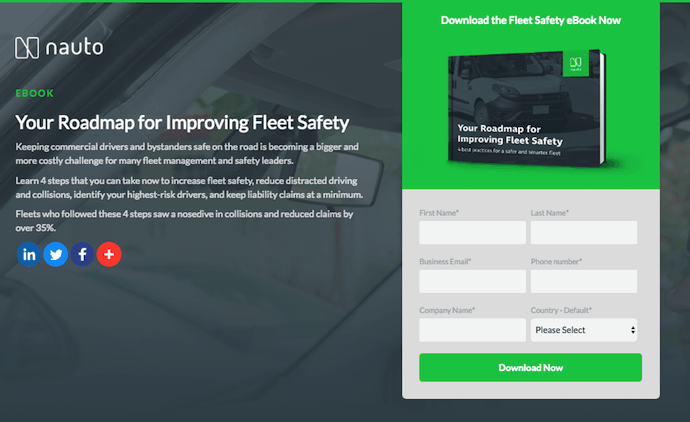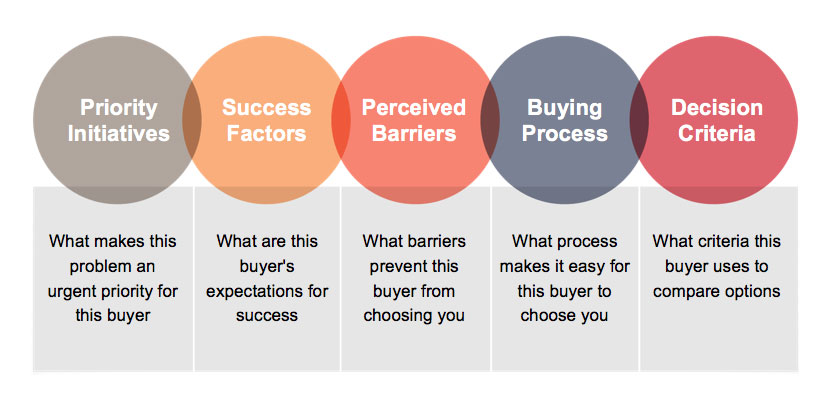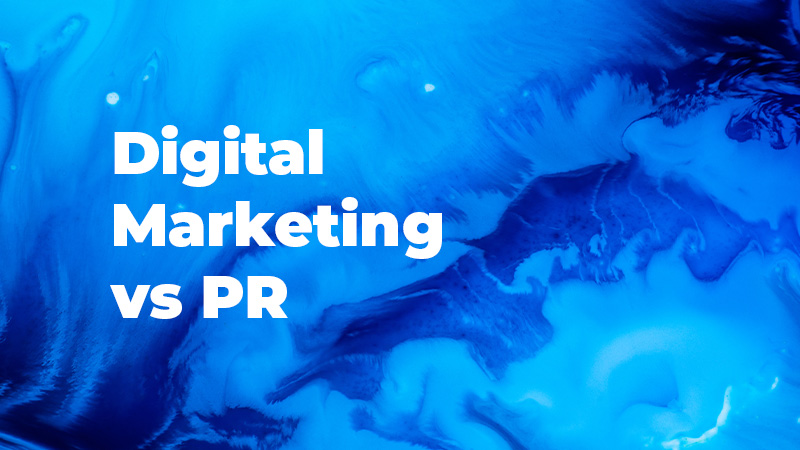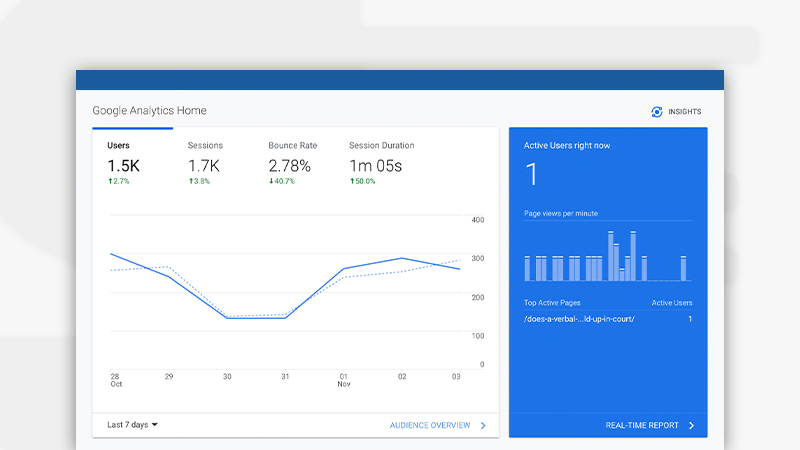Behind every great marketing strategy is a formula for success.
If you want your business to consistently grow through its digital presence, you can’t just start writing blogs, sending emails or posting on social media and hope for the best.
You need a plan.
The tough part is that in marketing, there are seemingly limitless ways to achieve a single goal. You might need to drive traffic to your website, but do you use paid advertising or organic content? How do you decide which tactic is right for your business?
We’re here to show you how to plan a full marketing campaign that you can be confident will work before you pay for a single ad or write a single blog. All in four steps.
Welcome to the four pillars of inbound marketing…
What Is Inbound Marketing
If you’re new to marketing you may not have come across the concept of inbound marketing yet, so let’s make sure we’re all on the same page.
When I was younger, I always wondered what the difference between marketing and advertising was. After all, I saw plenty of marketers who spent their time creating leaflets, radio adverts or TV commercials. Isn’t that what advertisers do?
The reason I couldn’t see how marketers differed from advertisers was that, traditionally, both groups have had the same goal: to shout about a business and try to grab the attention of as many potential customers as possible.
This was okay before the internet came along but now it is not enough to just win someone’s attention. You have to win their trust.
That’s where inbound marketing comes in.

Inbound marketing inspires customers to come to you, not the other way around. While traditional marketing and advertising focus on what will benefit your business, inbound marketing is built around benefiting your leads and customers.
Only by delighting your prospects and giving them value through informative, relevant content can you begin to develop the trust required to turn them into a customer.
Now, you’re probably thinking, “this makes sense, but where am I supposed to find the time provide all this value?”
One of the best bits of inbound marketing is that it uses automation software to build this brand relationship with leads without you having to lift a finger.
Through this automated relationship building process, you’re able to learn more and more about your prospect. That means that by the time you or your sales team get involved, you already know everything you need to close that sale.
Furthermore, by the time you approach a lead, they’re ideally positioned to purchase quickly, so you don’t waste time chasing prospects that aren’t ready to buy.
That’s why inbound marketing customers are more cost-effective than their outbound alternative and why a growing number of businesses are turning to inbound.
So we have a brief idea of what inbound marketing is but to understand it fully and create a marketing campaign in four steps, we need to look at its very foundations: The 4 Pillars of Inbound Marketing.
Pillar 1: Build Your Marketing Toolkit

Like any project, the first step to developing a marketing strategy that works is checking you have the right tools for the job.
This doesn’t mean you need to have a brand new website or be on every social media platform. When we talk about building your marketing toolkit, we mean the behind-the-scenes tools and systems you’ll need for inbound success.
Let’s look at some of the common inbound marketing tools you’ll need:
CRM
A system for customer relationship management (CRM) is vital to marketing success. Without an advanced one, you’ll be unable to manage your database of contacts and market or sell to them effectively. HubSpot has a very powerful CRM and the best bit is it’s free.
Blog
If you don’t have a blog on your website now, this is going to be one of the first things you’ll want to develop. A blog is one of the cornerstones of successful inbound marketing as it forms the primary tool for delivering value.
Landing Pages
Once a person is on your website, you need a system for motivating them to provide you with details like their name, email address and phone number. This is called conversion rate optimisation (CRO) and landing pages are a primary tool for this. You can see an example of a landing page below or read our full guide to CRO here.

Once a person is in your email database, you’ll want to continue to provide them with value via email. Therefore, having a tool that allows you to create high-quality emails and send them to your database with ease is essential. Mailchimp is a popular option, as is HubSpot.
Automation
If you’re producing more leads than your sales team can follow up with themselves then automation a life-saver. Automation allows you to qualify and nurture leads into customers with minimal input from your sales team, improving efficiency and allowing your team to focus on closing sales, not qualifying leads.
Social Media Scheduling
Social media is an important part of any marketing strategy. More and more people are using social media to check out companies they are considering purchasing with, so maintaining a presence is vital. A social media scheduling tool allows you to make this job simple.
Analytics

There is no point in doing any marketing if you don’t have a system in place for measuring how effective it is. Google Analytics should be your first port of call for measuring website metrics, but many softwares have analytics of their own you can make use of.
Easy Website Hosting
Part of building your marketing toolkit should be reviewing your existing website hosting service and its ease of use. I’ve lost count of the number of clients who’ve been using cheap hosting that damages user experience. Find a provider that makes your website quick and reliable.
Technical SEO
In order to maximise your website’s ability to rank on Google (or any other search engine) you need a system for identifying technical SEO (search engine optimisation) issues like broken links or slow page load speeds.
Keyword Research
If ranking highly on Google is an aspiration, you’ll need to tool for conducting keyword research. This doesn’t have to cost any money and Google’s Keyword Planner is a good place to start. When you’re ready to upgrade, paid systems like Moz or SEMrush are highly regarded.
Additional Sales Tools
I’ve focused on marketing tools you’ll need, but it’s worth noting that there are a number of useful sales tools like personalised email sequences and deal-boards that are worth using as part of your marketing strategy. Take some time to research what software could support your sales team.
Pillar 2: Understand Who You’re Marketing To

Once your system is set up, it’s time to develop more of an idea about who you’re actually marketing to. In short, you need an in-depth understanding of what your website visitors, leads and customers are looking for from your product. What are their challenges, aspirations, and needs?
The trap many businesses fall into here is to define who their customer is by the product they buy. For example:
I sell house extensions, so my buyer is someone who needs an extension.
In reality, purchasers of extensions have a variety of potential motivations. They may need more space because of a growing family or simply be looking to add value to their home.
If you build your marketing strategy around the former motivation, when actually it is the latter that is true, your marketing will fail. That is why knowing your customer is so essential.
Of course, there is no point in only you knowing your customer. Your entire team needs to be on the same page. Therefore, you need to document your customer. This is called a buyer persona and developing this is the second pillar of inbound marketing.
We’ve written an entire blog on buyer personas and how to create your own, which you can read here, but for now, here’s an overview.
The Rights and Wrongs of Buyer Persona Development
If you do a Google search about creating a buyer persona, you’ll likely find articles that recommend building buyer personas around who you think your customers are, and maybe sending out a survey to existing customers.
The first thing to say is that this is the WRONG way to develop a buyer persona. As we saw with our extension example, it is always possible that your perception of your customer isn’t 100% accurate. Therefore, developing a persona based on your ideas is risky.
When it comes to sending surveys to your customers, there is little useful information you’ll be able to gather. Most of the detail you gather will be demographic and provide little insight into the purchasing motivations of your customers.
In order to build a buyer persona that is accurate, you’ll need to conduct interviews with your customers. These interviews should be informal and not follow a set of questions, as the subtleties you’re trying to uncover will need to be teased out organically.
Even better than speaking to your customers is speaking to the prospects who you just missed out on. Clearly, something about your proposition (or something about your competitor’s) swayed them to not purchase with you. Finding out what will allow you to adapt your marketing and sales process to eliminate this problem.
The Five Rings of Buying Insight

We’ve already mentioned that your interviews shouldn’t follow a set of questions, but by keeping the five rings of buying insight on your mind, you can impose some structure on the conversation if needs by.
The five rings were developed by Adele Revella and are:
- Priority Initiatives – What are the motivations, considerations, and challenges that inspire someone to consider making a purchase?
- Success Factors – What does your product, service and overall business need to provide for a customer to consider it a successful purchase?
- Perceived Barriers – What are the barriers that stop a prospect from purchasing with a business like yours?
- Buyer’s Journey – What role does your persona play in the purchasing decision? Are they the decision maker or are others involved?
- Decision Criteria – What information or resources does your buyer persona absorb before they are ready to purchase?
When conducting your buyer persona interviews, keep in mind that it is these five questions that you’re trying to answer. If you can do so, then congratulations, you have yourself a buyer persona.
How Many Buyer Personas Do You Need?
It’s worth pointing out that not every one of your customers will fit into a single buyer persona. You’ll likely need a few and build tailored marketing strategies to each one. McDonald’s adverts are a great example of this and you can see examples of what I mean here.
Alongside buyer personas for the customers you want, you can also create negative personas for the customers you don’t want. In the marketing industry, a good example of a negative buyer persona would be a university student. They may engage with a lot of our marketing, but they’re never going to purchase with us.
Pillar 3: Develop a Winning Strategy

Setting up your marketing system (pillar 1) and developing your buyer personas (pillar 2) are consistently missed when businesses develop marketing strategies.
As a result, these strategies are often broad instead of targeted, and therefore deliver a low return on investment (ROI).
If you’ve taken the time to implement the first two pillars, you’ll have a clear idea of exactly what your website visitors and leads are looking for. This makes delivering value to them and, by extension, building trust with them far easier.
You’ll also have a clear idea of the tools that are available to you. This will help you avoid making the mistake of only implementing half a strategy, eg. attracting visitors to your website, but not having the landing pages to convert them into leads.
When building your marketing strategy, make sure you don’t just target people who are ready to purchase straight away. The reality is that the majority of people who visit your website won’t be ready to buy, so you need a strategy in place for capturing their information and nurturing them until they are ready.
We’ve written a blog on this very subject, which you can read here.
Don’t Forget about Goals
While your setting your strategy, make sure you also take the time to clearly identify your goals. These should be overall business goals and marketing goals so you can make sure that they’re aligned.

It’s important to conduct this goal setting process so you can be realistic about what your marketing can achieve and how it does so.
For example, content marketing provides the lowest cost per lead but typically takes around a year before it begins generating consistent results (depending on your industry and website authority).
This is great if your goal is to future-proof your marketing, but doesn’t work if your goal is to sell a high number of products in the next three months.
Understanding your goals early helps you avoid putting time and money into the wrong strategy, only to abandon it later. Goal setting will also help you budget and set realistic expectations.
If you sell 100 properties a year through agents and your goal is to sell them all through your website, that this is going to take a lot of investment.
If your budget doesn’t stretch to that, you need to reevaluate your goals. The worst thing you can do when setting a strategy is not understand whether you’re going to realistically be able to achieve your aspirations.
If your goals are unattainable, then even the best strategy will fail before it begins.
Finally, marketing should not be treated as a quick fix to produce immediate sales. You need to develop a long-term strategy to ensure that your marketing efforts will scale with your business.
For example, your marketing goal may be to generate ten customers in the first year and 20 in the second with a budget of £2000/month. If you spend £2000/month on PPC to achieve your goal in the first year, you’re going to be unable to achieve your second year target and will have lost an entire year to implement a strategy that could have.
This is something I see time and time again. Businesses can focus so much on the immediate ROI, that they forget to plan for their future ROI. This creates a firefighter mentality that leaves your marketing in a constant state of crisis.
To combat this, set short, medium and long-term goals (that are measurable) early and develop a strategy to suit them. If something changes, update your strategy and your goals to make sure you never lose track of what you’re trying to achieve.
Pillar 4: Execute with Confidence

We’ve come to the final pillar of inbound marketing and, unsurprisingly, the one most businesses jump to first: campaign execution.
In business, we’re always looking for quick results but let me ask you a question:
Would you rather bad results today, or good results tomorrow?
I think I know what your answer is, but when it comes to marketing most businesses jump in at the deep end, without setting up their system, developing their buyer personas, and building their strategy.
As such, when a company jumps straight to execution, it is all too easy to lose track of what you’re trying to achieve and how you’re trying to achieve it.
Early in my career I was told this story, and it’s stuck with me ever since:
Two racing car drivers were coming up to a corner. The first driver knew that racing was all about who could go quickest. So, as he came to the corner he sped up and crashed. The second driver understood that going fast isn’t always about your MPH. He slowed down, rounded the corner and went onto to win the race.
The point of the story is that sometimes you have to slow down to speed up. Marketing is the same. Speeding into campaign execution without slowing down to implement the first three pillars of inbound marketing is guaranteed to make your marketing crash.
Develop all four pillars and you’ll be ready to benefit from an exceptional return on investment from your marketing.
So, Where Do You Start?
Not all businesses start at zero, and it’s unlikely that yours will too. Therefore, your first step should be to identify how complete your first three pillars are. From there, you’ll be able to identify exactly what you need to do next.
You’re not alone in this though. Book a free Digital Workshop with Strawberry Forge, and we’ll help you identify whether your marketing strategy is built for success or… well, not success.







